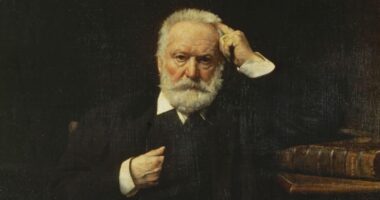William Wordsworth Biography | Poems | Poetry Foundation: William Wordsworth, a visionary poet whose works continue to captivate and inspire readers centuries after his time. From the rolling hills of the Lake District to the bustling streets of London, Wordsworth’s life was filled with moments of both profound beauty and deep sorrow. His poetry, infused with a deep appreciation for nature and a love of humanity, touched the hearts of countless readers and earned him a place among the greatest poets of all time. Join us on a journey through the life, works, and legacy of William Wordsworth, as we explore the man behind the poetry and discover the enduring power of his words.
Early Life and Education of William Wordsworth
William Wordsworth was born on April 7, 1770, in Cockermouth, a small town in the scenic region of the Lake District in northwestern England. He was the second of five children, and his parents, John and Ann Wordsworth, were both from prominent families in the area. Unfortunately, William’s mother died when he was only eight years old, and his father passed away when he was thirteen. These losses would deeply affect Wordsworth and shape much of his later work.

Despite these hardships, Wordsworth received a good education. He attended St. John’s College at Cambridge University, where he studied classics and literature. While at university, Wordsworth became interested in the revolutionary ideas of the French Revolution, and he spent time in France during his summer breaks.
After university, Wordsworth spent a brief time in London, where he became friends with the poet Samuel Taylor Coleridge. The two poets collaborated on several works, including the groundbreaking Lyrical Ballads, which is widely considered the beginning of the Romantic movement in English literature.
Throughout his life, Wordsworth continued to draw inspiration from his upbringing in the Lake District, and his love of nature and the outdoors became a central theme in much of his poetry. In his later years, Wordsworth would become one of the most celebrated poets of his generation, and his influence on English literature would be felt for generations to come.
Initial Days of Wordsworth’s Career and His First Publication
William Wordsworth’s career as a poet began in his early twenties, when he published his first book of poetry, “An Evening Walk and Descriptive Sketches” in 1793. The book received mixed reviews, but it established Wordsworth as a poet with a keen eye for nature and a talent for evocative descriptions.
In the years that followed, Wordsworth continued to write poetry and develop his craft. He was deeply influenced by the French Revolution and the ideals of liberty and equality that it represented, and many of his early works reflected these ideals. Some of his most famous early poems include “Lines Composed a Few Miles above Tintern Abbey” and “The Prelude,” an autobiographical epic that Wordsworth continued to revise and expand throughout his life.

However, it was Wordsworth’s collaboration with fellow poet Samuel Taylor Coleridge that would truly cement his place in literary history. The two poets published “Lyrical Ballads” in 1798, a groundbreaking collection of poetry that rejected the artificial language and subject matter of much contemporary poetry in favor of a more natural, conversational style. The collection included some of Wordsworth’s most famous poems, including “The Rime of the Ancient Mariner” and “Lines Written a Few Miles above Tintern Abbey.”
“Lyrical Ballads” was a critical and commercial success, and it is widely considered to be the beginning of the Romantic movement in English literature. It established Wordsworth and Coleridge as two of the most important poets of their generation, and it continues to be studied and celebrated today as a landmark in the history of English poetry.
Wordsworth’s Love Life and Family
William Wordsworth’s love life and family were complex and deeply intertwined with his poetry.
In 1791, Wordsworth met a young woman named Annette Vallon while traveling in France. The two fell in love and had a child together, a daughter named Caroline. However, political events forced Wordsworth to leave France, and he returned to England without Annette or Caroline. The separation would deeply affect Wordsworth, and he wrote several poems about their relationship and the pain of their separation.

In 1802, Wordsworth married Mary Hutchinson, a childhood friend who shared his love of nature and the outdoors. The couple had five children together, but tragically, three of them died in childhood. Wordsworth’s grief over the loss of his children would inspire some of his most powerful poetry, including “We Are Seven” and “The Solitary Reaper.”
Wordsworth’s relationship with his sister, Dorothy, was also incredibly important to him. The two were very close, and Dorothy was a source of inspiration and support for her brother. She often traveled with him, and her journals and letters provide valuable insights into Wordsworth’s life and work.
We can say that Wordsworth’s love life and family were complex and often difficult, but they played a crucial role in shaping his poetry and his worldview. His love for Annette Vallon, his marriage to Mary Hutchinson, and his close relationship with his sister Dorothy all contributed to the depth and richness of his work, making him one of the greatest poets of all time.
Best and Most Popular Works of William Wordsworth
William Wordsworth was an English poet who played a crucial role in the development of the Romantic Movement in literature. His works are known for their vivid descriptions of nature and their exploration of human emotions. Here are some of his best and most popular works:

- “Lyrical Ballads” (1798) – This collection of poems, co-written with Samuel Taylor Coleridge, is considered one of the most influential works in English literature. It introduced a new style of poetry that focused on everyday subjects and the experiences of ordinary people.
- “Tintern Abbey” (1798) – This poem is a meditation on the power of memory and the connection between man and nature. It describes the speaker’s return to a place he visited as a youth and reflects on the changes that have taken place since then.
- “The Prelude” (1850) – This autobiographical poem tells the story of Wordsworth’s spiritual and intellectual growth. It is considered one of the greatest works in the English language.
- “Ode: Intimations of Immortality” (1807) – This poem explores the relationship between childhood and adulthood, and the loss of innocence that accompanies the passage of time.
- “Daffodils” (1804) – This poem is one of Wordsworth’s most famous works. It describes a field of daffodils and reflects on the beauty and power of nature.
- “I Wandered Lonely as a Cloud” (1804) – Another of Wordsworth’s most famous poems, this work also focuses on nature and the emotions it can evoke. It describes the speaker’s experience of seeing a field of daffodils and the feelings it inspires.
Wordsworth’s works are known for their emphasis on nature, the beauty of the ordinary, and the power of memory and imagination.
The Legacy of William Wordsworth
William Wordsworth (1770-1850) is considered one of the most prominent and influential poets of the Romantic era. His legacy extends beyond his own works to encompass his contributions to the development of the genre and the broader literary landscape.
Wordsworth’s emphasis on the importance of nature and the natural world in his poetry was a revolutionary concept in his time. He believed that nature had the power to nourish the human spirit, and his poetry celebrated its beauty and grandeur. This focus on nature was a significant departure from the prevailing literary trends of the time, which emphasized the artificial and the urban.

Another important aspect of Wordsworth’s legacy is his commitment to the use of plain language in poetry. He believed that poetry should be accessible to all, not just an elite educated class. His approach to language was revolutionary and helped to democratize poetry and make it more accessible to a wider audience.
Wordsworth’s influence on the Romantic movement was significant. His poetry inspired many other writers, including Samuel Taylor Coleridge and John Keats. His emphasis on the importance of emotion and the imagination in poetry helped to establish these as central elements of Romantic poetry.
In addition to his contributions to poetry, Wordsworth also had a lasting impact on the development of literary criticism. His work “Preface to Lyrical Ballads” (1800) is considered a seminal text in literary criticism and helped to establish many of the key concepts of Romantic literary theory.
Overall we can say that William Wordsworth’s legacy is a significant one. His contributions to the development of poetry, literary criticism, and Romantic literature have had a lasting impact on the literary landscape and continue to inspire writers and readers today.
Also Read: 10 Best Sports Biography of All Time



